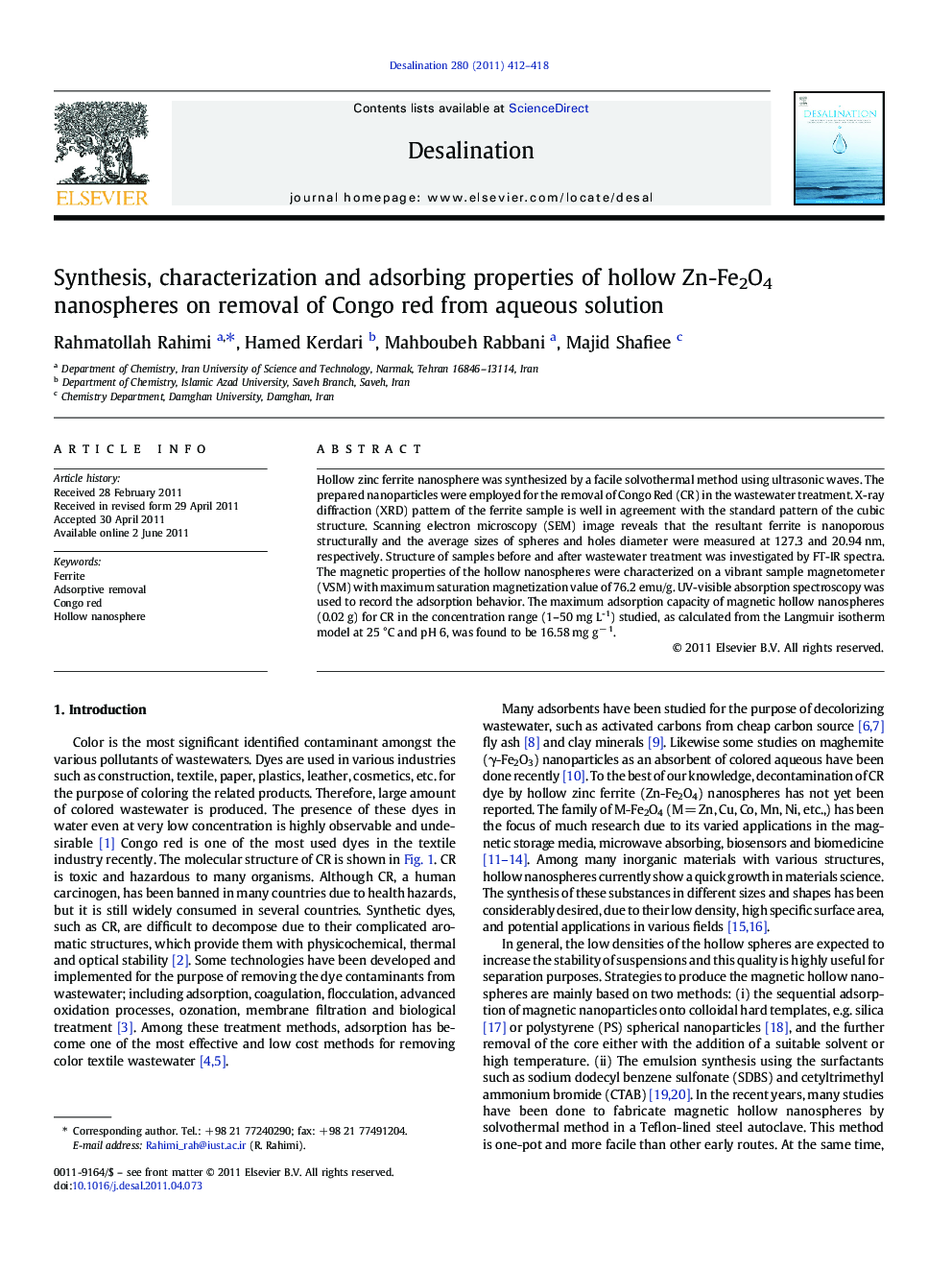| کد مقاله | کد نشریه | سال انتشار | مقاله انگلیسی | نسخه تمام متن |
|---|---|---|---|---|
| 624646 | 1455411 | 2011 | 7 صفحه PDF | دانلود رایگان |

Hollow zinc ferrite nanosphere was synthesized by a facile solvothermal method using ultrasonic waves. The prepared nanoparticles were employed for the removal of Congo Red (CR) in the wastewater treatment. X-ray diffraction (XRD) pattern of the ferrite sample is well in agreement with the standard pattern of the cubic structure. Scanning electron microscopy (SEM) image reveals that the resultant ferrite is nanoporous structurally and the average sizes of spheres and holes diameter were measured at 127.3 and 20.94 nm, respectively. Structure of samples before and after wastewater treatment was investigated by FT-IR spectra. The magnetic properties of the hollow nanospheres were characterized on a vibrant sample magnetometer (VSM) with maximum saturation magnetization value of 76.2 emu/g. UV-visible absorption spectroscopy was used to record the adsorption behavior. The maximum adsorption capacity of magnetic hollow nanospheres (0.02 g) for CR in the concentration range (1–50 mg L-1) studied, as calculated from the Langmuir isotherm model at 25 °C and pH 6, was found to be 16.58 mg g− 1.
Research Highlights
► Synthesize hollow Zn-ferrite nanospheres via a solvothermal method.
► Use of ultrasound during procedure leads to smaller diameters in hollow nanospheres.
► Nanoparticles were used as a nanoporous adsorbent for the adsorption of CR.
► Various conditions such as pH and initial dye concentration were evaluated.
► The maximum adsorption capacity (qmax) for this ferrite was found to be 16.10 mg g-1.
Journal: Desalination - Volume 280, Issues 1–3, 3 October 2011, Pages 412–418